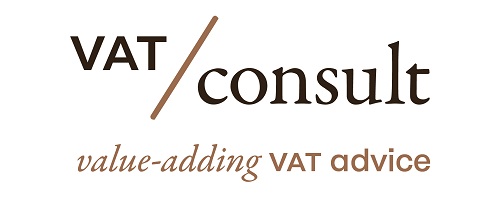Articles in the EU VAT Directive
Article 187
1. In the case of capital goods, adjustment shall be spread over five years including that in which the goods were acquired or manufactured.
Member States may, however, base the adjustment on a period of five full years starting from the time at which the goods are first used.
In the case of immovable property acquired as capital goods, the adjustment period may be extended up to 20 years.
2. The annual adjustment shall be made only in respect of one-fifth of the VAT charged on the capital goods, or, if the adjustment period has been extended, in respect of the corresponding fraction thereof.
The adjustment referred to in the first subparagraph shall be made on the basis of the variations in the deduction entitlement in subsequent years in relation to that for the year in which the goods were acquired, manufactured or, where applicable, used for the first time.
Article 188
1. If supplied during the adjustment period, capital goods shall be treated as if they had been applied to an economic activity of the taxable person up until expiry of the adjustment period.
The economic activity shall be presumed to be fully taxed in cases where the supply of the capital goods is taxed.
The economic activity shall be presumed to be fully exempt in cases where the supply of the capital goods is exempt.
2. The adjustment provided for in paragraph 1 shall be made only once in respect of all the time covered by the adjustment period that remains to run. However, where the supply of capital goods is exempt, Member States may waive the requirement for adjustment in so far as the purchaser is a taxable person using the capital goods in question solely for transactions in respect of which VAT is deductible.
Article 189
For the purposes of applying Articles 187 and 188, Member States may take the following measures:
(a) define the concept of capital goods;
(b) specify the amount of the VAT which is to be taken into consideration for adjustment;
(c) adopt any measures needed to ensure that adjustment does not give rise to any unjustified advantage;
(d) permit administrative simplifications.
Article 190
For the purposes of Articles 187, 188, 189 and 191, Member States may regard as capital goods those services which have characteristics similar to those normally attributed to capital goods.
Article 191
If, in any Member State, the practical effect of applying Articles 187 and 188 is negligible, that Member State may, after consulting the VAT Committee, refrain from applying those provisions, having regard to the overall impact of VAT in the Member State concerned and the need for administrative simplification, and provided that no distortion of competition thereby arises.
Importance of thee articles
Articles 185–192 of the EU VAT Directive (2006/112/EC) form part of the section dealing with the adjustment of deductions. These rules are central to ensuring that the right to deduct input VAT (one of the cornerstones of the VAT system) remains fair, neutral, and proportionate over time.
General Theme
- When a taxable person deducts input VAT (e.g., on goods or services purchased for business), that deduction is based on the intended taxable use.
- If later circumstances change (e.g., the asset is used for exempt purposes instead, or it’s sold), then the original deduction may no longer reflect reality.
- Articles 185–192 set out how such corrections (“adjustments”) must be made to keep the VAT system neutral.
Article-by-Article Importance
- Art. 185 – Obligation to adjust: Introduces the principle that adjustments are required if factors used to determine the original deduction change. (E.g., if you buy a car intending to use it 100% for business, but later use it privately 50%, an adjustment is required.)
- Art. 186 – Member State discretion: Allows MS to lay down rules for implementing adjustments, giving flexibility for national administrations.
- Art. 187 – Capital goods scheme: Sets out adjustment periods for capital goods (generally 5 years, but 20 years for immovable property). Ensures that VAT deductions on long-term assets are spread out, and adjustments reflect actual use over time.
- Art. 188 – Adjustment method: Describes the annual adjustment mechanism based on actual use during the adjustment period.
- Art. 189 – Member State powers: Allows MS to define details (e.g., what constitutes “capital goods,” thresholds, and administrative simplifications).
- Art. 190 – Transfer of capital goods: Adjustment rules apply if capital goods are transferred to another MS or business context.
- Art. 191 – Calculation method: Explains how the amount of adjustment is to be calculated.
- Art. 192 – Simplification option: Allows MS to permit taxable persons not to make adjustments if the effect is minimal.
Why these provisions are important
- VAT neutrality – They ensure businesses neither gain nor lose unfairly due to changes in use of goods/services.
- Capital goods scheme – Crucial for immovable property and high-value assets, preventing abuse (e.g., deducting full VAT on a building then immediately shifting it to exempt use).
- Flexibility – Gives Member States leeway to design practical national adjustment rules while respecting the Directive’s framework.
- Legal certainty – These articles have generated significant ECJ case law (e.g., on what counts as a “capital good” or when an adjustment is required), clarifying the balance between business reality and VAT neutrality.
- Impact on business – Businesses need to track use of assets over several years, particularly real estate, making these rules administratively important.
✅ In short: Articles 185–192 form the adjustment mechanism for input VAT deductions, especially for capital goods. They are essential to preserve neutrality, fairness, and proportionality in the VAT system over time.
ECJ Cases decided
- C-396/98 (Schloßstraße) – No VAT deduction due to change in national law as a result of which it is no longer possible to opt for taxation of rental
- C-487/01 (Gemeente Leusden) & C-7/02 (Holin Groep) – Amendment of national scheme abolishing the possibility to opt for taxation of rental of immovable property
- C-172/03 (Heiser) – Switch from taxation regime to exemption, without requiring an adjustment for capital goods, qualifies as state aid
- C-332/14 (Wolfgang und Wilfried Rey Grundstücksgemeinschaft GbR) – Input tax deduction correction – Mixed Use buildings
- C-229/15 (Mateusiak) – Cessation of the taxable economic activity, Supply of goods for consideration after adjustment period
- C-532/16 (SEB bankas) – Incorrect classification of land supply as “taxed activity” – Change of original invoice by supplier
- C-140/17 (Gmina Ryjewo) – Input VAT deduction adjustment after change of use of capital goods
- C‑201/18 (Mydibel SA vs Belgium) – Input VAT, immovable property, sale and lease back
- C-661/18 (CTT – Correios de Portugal) – Adjustment of pro rata calculation
- C-791/18 (Stichting Schoonzicht) – Dutch revision scheme for capital goods is in line with the EU VAT Directive
- C-374/19 (Finanzamt Bad Neuenahr-Ahrweiler) – No Right to deduct VAT in case building is only used for exempt transactions
- C-248/20 (Skellefteå Industrihus) – Order – Input VAT should not be repaid immediately if a planned real estate project is cancelled
- C-293/21 (Vittamed technologios) – Review of VAT deduction of capital goods in case of liquidation of the taxable person
- C-627/21 (Administraţia Judeţeană a Finanţelor Publice Sibiu … )- Order – Right to deduct VAT if VAT registration is cancelled for a given period
- C-243/23 (Drebers) – Extended Adjustment Period for Immovable Property Works
ECJ Cases Pending
None
Briefing document & Podcast
To be completed
- Join the Linkedin Group on ECJ/CJEU/General Court VAT Cases, click HERE
- VATupdate.com – Your FREE source of information on ECJ VAT Cases
Latest Posts in "European Union"
- From matchmaker to supplier: deemed supplies and platform classification under EU VAT
- European Commission Report Highlights Uneven VAT Rate Exemptions Across EU Member States
- EU Packaging Regulation Faces Legal Challenges Over Reusability, Plastic Ban, and Deposit Requirements
- European Union Adopts Peppol PINT Billing Standard for E-Invoice Interoperability
- VAT Exemption for Bitcoin Exchange Transactions Under EU Court Ruling














